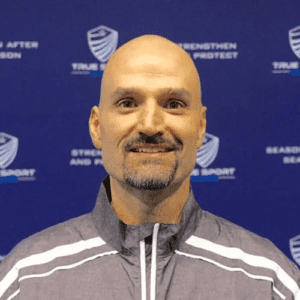We all put our pants on one leg at a time but which leg goes first?
I’ve been relaying this story to patients more as of late, especially to the ones who complain of chronic pain or pain that comes back after the initial treatment is over. It has produced a significant change in the trajectory of the patient’s outcome so for that reason alone it warrants sharing.
Our acute patients may see a doc 2-3 times per week but more typically we see patients 1 time per week. So one 30-minute session per week. We not only treat but we also teach.
We investigate.
We interrogate.
We listen.
We are harvesting clues that will help us find a solution to the presenting problem or pain that the patient is experiencing.
I have found that in some cases our treatment is not what gets the person to the finish line. Unapologetically our services are exceptional but a deeper understanding of the patients’ lives, occupations, and experiences is what produces the result. The following are two stories that I will never forget. A third is currently in the making, fingers crossed.
Patient Case Study # 1: Neck Pain

A long-time patient came into the office complaining of neck pain. We do our thing (chiropractic adjustment, soft tissue work, therapeutic exercises) and the patient feels better. We provide her with the tools to prevent this from reoccurring. It happens anyway much to our dismay. As we scratch our heads we begin to interrogate the patient on activities, occupation, or anything they would consider to be relevant. We guide her on what we mean by relevant. Many activities that we perform regularly can actually be our culprit but we would have no idea until someone points it out.
The patient happened to be a piano teacher who always sat on the right side of the student while she turned pages and instructed. I asked if there was any way she could switch to the left side of the student and she stated, “No.”
I then asked if there was anything else in her daily routine that would be asymmetrical and repetitive.
She had the light bulb moment and said “I sit at the dinner table and the TV is up and to my left.” I said, “Can you sit on the other side of the table?” and of course, she replied “YES!”
The treatment that she received at our chiropractic office was solid but the asymmetrical stress on her neck was undoing everything we were doing. After she corrected the pattern, her neck pain was gone.
Patient Case Study #2: Shoulder Pain

A patient who had a tree company came in complaining of shoulder pain. Again we go through our protocols (chiropractic care, soft tissue work, exercises) and rapidly resolve the complaint. However, it resurfaces quickly so we begin our investigation into their activities. After some brainstorming, he realizes that he starts his chainsaw with his right arm about 100 times per day. I asked if he could possibly do 50 starts on the left and 50 on the right without cutting off his own limbs. It was certainly worth a shot.
Lo and behold, his complaint (shoulder pain) did not return.
Understanding Our Habits and Daily Patterns: Our Engrams
The moral of these stories boils down to something called ENGRAMS. These are our defaults. These are our patterns. Our routines. Our wiring.
We always talk about changing patterns. It is literally the hardest thing to do because it is remapping our wiring. This has to be done with incredible repetition and reinforcement so that the new pattern is accepted by the brain to become the new default.
Here is the best example to try yourself.
Press your palms together in front of you like you are praying. Now interlace your fingers and close your hands on each other.
Which thumb is on top?
Now switch them.
Feels funky, doesn’t it?
You’ve just experienced your engram and you’ve also experienced how icky it feels to try and change it.
Another interesting but slightly dangerous example is putting on your underwear. If you are standing, everyone puts their underwear on with the same starting leg. Try and switch this pattern to the other leg. Make sure you are nowhere near any pointy corners and have a safe landing zone cleared out as many of you may wind up on the floor and still naked from the waist down. What a sight! You can see what becomes the issue.
Our habits, routines, or patterns are difficult to alter. It is remarkable brain training and super beneficial for preventing cognitive decline. (This has no official empirical evidence to back it up but I’m confident with the statement.)
Patient Case Study #3: Lower Back Pain

The third, most recent, and not yet fully written story is about a young patient who has had episodic lower back pain for most of his young adult life. Way too young to have these complaints if you ask me.
He had just completed a stint of physical therapy along with our treatments. He was feeling not only great but confident he finally figured this thing out. Sadly it was only a couple of weeks before his back “kinked” again and his progress turned into regress. Upon revealing the former two stories to him I asked if there was anything analogous in his life that could be derailing our progress.
He then took an odd position in the chair where he was sitting. He essentially folds one leg underneath the other and sits on his foot. He works at a computer all day. I asked him to change the configuration to the mirror image and see how it feels. He reported that it felt strange. I then instructed him to attempt more symmetry in his daily sitting. Either switch legs at lunchtime or try to sit with both feet in the same position.
He then reported that back in his younger days he remembers carrying a buddy up the stairs in some type of testosterone-filled wager. Afterward, he felt discomfort. It is very likely that the sitting position was fueled by his original trigger and even though it relieves his discomfort while sitting, it has now created an episodic chronic lower back complaint which is relieved by sitting. If we only prop up the second domino, but the first keeps knocking it over, we are getting nowhere.
Occupational Repetitive Stress That Can Cause Chronic Pain

Some occupations are prone to asymmetrical stress and, as a result, chronic or recurring pain. For example, a more obvious and less insidious repetitive stress would be the occupations of dentists or hygienists. Their suites are set up as right or left-handed. It is one of the most asymmetrical occupations I can cite. Their cross-training should include exercises to UNDO the stressors of their job.
Some of the most common repetitive stressors these days are too much sitting, and having your multiple screens set up in a way where you’re viewing some (which are off-center) more than others.
Aside from occupations it literally could be the way someone ALWAYS positions themselves on their couch, car, bed etc. They rarely think it can contribute to complaints but it often does. Especially if sitting differently feels weird or uncomfortable. A good personal example is if I’m driving a golf cart and I lean out to grab a ball to the left I can do it easily and with no pain. If I’m the passenger and I try to do the same thing to the right it’s really wonky. Guess what I’m working on? The wonky pattern needs to improve.
Beating Your Chronic Pain with New Routines and Mindful Approach
You can obviously tell that this requires a deep dive by not only the doctor but the patient as well. Introspection is one of the tenets that we rely heavily upon with not only our investigation but our rehabilitation as well. Learning how to feel the exercises correctly requires significant CPU (brain) processing power. It is cognitive first, and physical second. This is also evident as someone who works out. You can’t simply go on a lat machine and expect that your lats will be targeted. It seems as I get older the concept of mindfulness becomes more and more useful in most aspects of life.
If you are tired of musculoskeletal chronic pain, give our chiropractic and sports medicine office near Smithtown a call or set up a free phone consultation to learn more about our approach. During your appointment, our doctors will use effective “get-out-of-pain” protocols and will help you pinpoint your daily routines and patterns that can contribute to your recurring pain and discomfort. It’s time to say “Goodbye“ to chronic pain for good.


